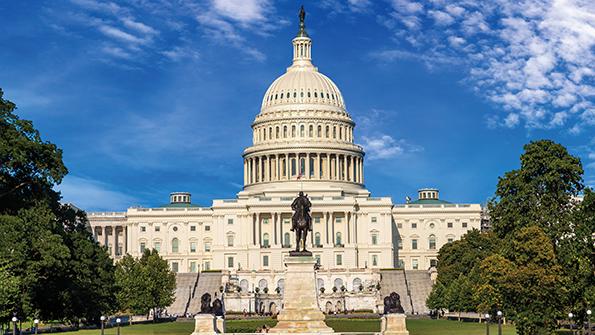
What if the aerospace and defense sector threw a party but nobody came? This might be how the rest of the decade feels, and the sooner everyone gets over it, the better.
Recently at industry events, including Aviation Week’s A&D Programs in November, industry chatter has turned to the potential for a “supercycle” in defense spending this decade. A supercycle in this sense is an extended period of growth and prosperity, and the term was often used to describe the 15 or so years in commercial aviation leading up to the COVID-19 pandemic and the Boeing 737 MAX debacle.
Since the start of the Cold War, the commercial aviation sector had experienced seven-year business cycles of ups and downs. The recent supercycle was double that for a unique set of reasons—and now many people see the same scenario developing in defense spending.
The U.S. defense budget authority bottomed out around 2014 as the depths of so-called sequestration cuts took effect. Donald Trump rode into office in 2017 saying he would cut the “crazy” Pentagon budget, but instead he oversaw an 11% increase in his first year alone. Surprisingly, President Joe Biden has not cut defense spending either, despite the removal of U.S. troops from Afghanistan and the hopes of the progressive wing of the Democratic Party. On the contrary, he also has sought annual increases that Congress has plused-up even more.
But Russia’s invasion of Ukraine in February sealed the deal for prolonged defense spending increases, according to widespread sentiment expressed at recent industry events. Like an exclamation mark, the return of a state-on-state land war on Western Europe’s doorstep has galvanized bipartisan and international support for record dollar amounts in defense spending.
The total U.S. defense budget request for fiscal 2023 already is roughly $813 billion, not counting ongoing supplemental requests for Ukraine, and Congress is expected to add to it before all is said and done. Conservative supporters and progressive critics alike expect a $1 trillion annual defense budget by around mid-decade if the current path prevails.
Still, that “if” cannot be ignored, and there are several reasons why the ongoing supercycle does not seem super to the U.S. and allied defense industries.
Melius Research analysts Rob Spingarn, Scott Mikus and Nick Monroe note that “more meaningful risks to defense stocks come from the fact that Congress needs to raise the debt ceiling, pass the fiscal 2023 budget, approve legislation allowing the Defense Department to adjust fixed-price contracts for inflation, and defer or repeal Section 174 that requires companies to amortize research and development costs for tax purposes rather than immediately expensing.”
Anyone who remembers the 2011 U.S. debt ceiling crisis—followed by the harmful Budget Control Act and its sequestration cuts as well as the 2013 government shutdown—knows this debate is far from academic. U.S. politicians have held— and could again hold—the government hostage to extreme ideology. And the disputes are not just fiscal. In November, ranking House Republican Kevin McCarthy of California wanted to postpone a vote on the fiscal 2023 National Defense Authorization Act until next year over Pentagon policy to allow service members access to abortion by transporting them to states where the procedure is legal.
Meanwhile, Democrats’ control of the Senate means economic price adjustments for fixed-price contracts are unlikely if legislation is not approved in the lame-duck session, the Melius trio told investor clients. Large defense primes have backlogs of expected work that were created and booked in recent decades of record-low interest rates. “If the Senate and the Democrat-controlled lame-duck House can’t agree on [economic price adjustment] legislation, defense contractors may be stuck honoring fixed-price contracts that did not contemplate today’s level of inflation,” they warned.
Likewise, the R&D amortization issue could tie up cash flow that publicly traded defense companies had planned to use to boost shareholder returns. The issue, the result of an accounting gimmick under the Trump administration’s 2017 tax cut law, was expected to be repealed when Biden was elected, but Washington has not obliged defense sector lobbying to date. If the law remains as written, defense companies may have to cut operating cash flow projections for 2023-26 by 10-12%, according to Melius Research.
These issues will be conflated by other challenges confronting the aerospace and defense industry, including profound supply chain disruption, workforce shortfalls and investor concerns related to environmental, social and governance criteria. Taken together, the 2020s defense supercycle may feel far from super when it ends, which it will someday. Just ask the commercial aviation industry.





